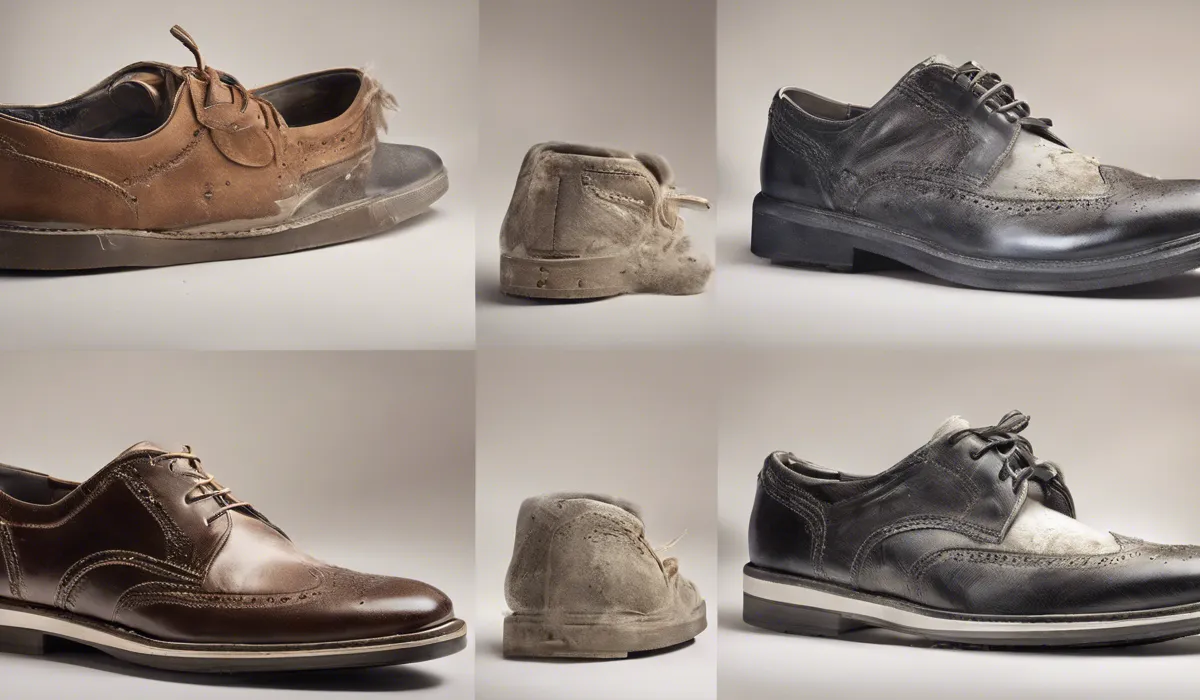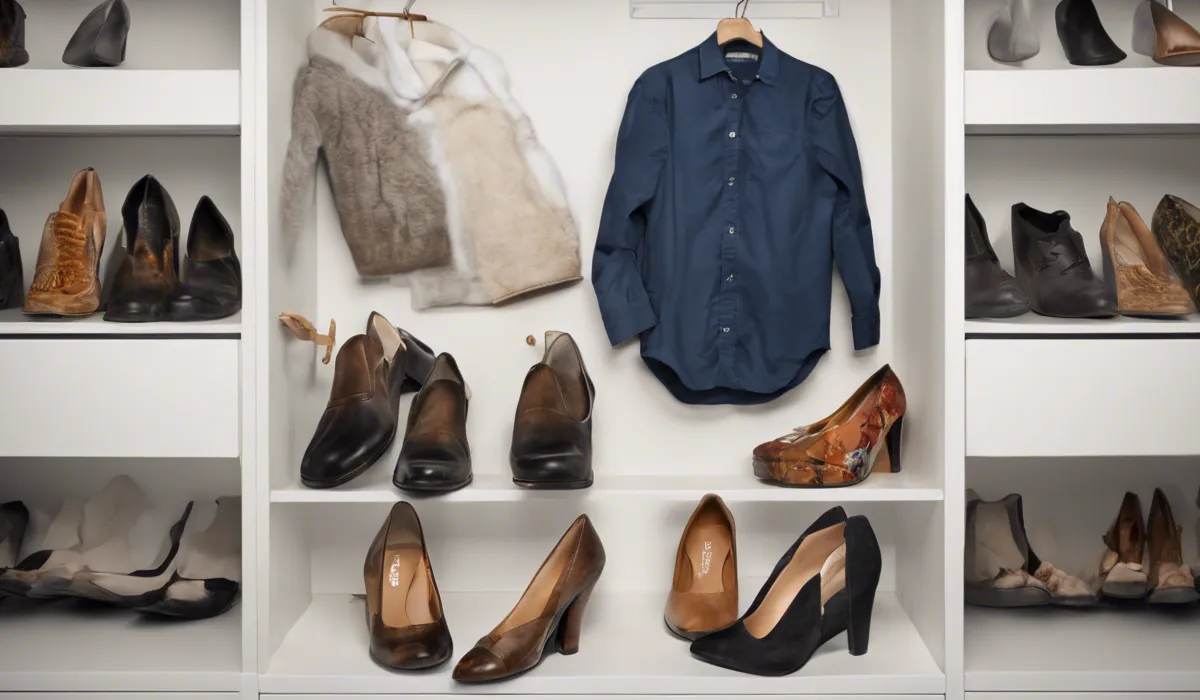To prevent mold on shoes in a closet, maintain low humidity by using desiccants or a dehumidifier, ensure good air circulation with a small fan or vent, regularly clean the closet, and keep shoes clean and dry before storing.
Understanding Mold Growth on Shoes

What Are Mold and Mildew?
Mold and mildew are types of fungi that thrive in moist, warm, and dark conditions. They spread by releasing spores into the air, which can settle on various surfaces, including shoes.
While mold is typically black or green and can penetrate beneath the surface, mildew is usually white or gray and remains on the surface. Both can damage your shoes and potentially cause health issues if not addressed.
Common Causes of Mold Growth on Shoes
Understanding why mold grows on shoes is key to prevention. The primary culprit is moisture, which can come from wet weather, sweat, or spills. When shoes don’t get enough air to dry out, mold finds a perfect home.
Closets often provide the dark and warm conditions that mold spores need to grow. By controlling these factors, you can keep your shoes safe.
Shoe Susceptibility to Mold
Not all shoes are equally at risk for mold. Materials like leather and canvas can absorb moisture, making them more prone to mold growth when compared to synthetic materials.
Shoes that are rarely worn or stored in dark, damp conditions are also more susceptible. It’s important to note which types of shoes in your collection need more care.
Preventive Measures for Mold on Shoes

Ensuring Proper Closet Ventilation
Adequate air circulation in your closet is crucial. Using a small fan or installing a vent can help keep the air moving, reducing the chance of mold growth.
You might also consider leaving the closet door open when possible to allow fresh air to circulate.
Utilizing Desiccants for Moisture Control
Desiccants, like silica gel packets, can absorb excess moisture in the air. Placing these in your closet or within shoe boxes can help keep your shoes dry.
It’s a simple yet effective way to ensure that the environment around your shoes stays unfavorable for mold.
Choosing the Right Storage Materials
When storing shoes, opt for materials that allow them to breathe. Avoid plastic bags and tight containers.
Instead, use cloth bags or boxes with ventilation holes. Breathable storage solutions can significantly reduce the risk of mold.
Regular Cleaning and Maintenance of Shoes
Cleaning your shoes regularly is not just about keeping them looking good, but also about preventing mold.
Dirt and organic material can provide food for mold spores, so keeping shoes clean will starve mold of its needed nutrients. Make it a habit to clean off any dirt or mud after wearing your shoes.
Drying Shoes Thoroughly Before Storage
It’s important to ensure that your shoes are completely dry before putting them away. Damp shoes can create a breeding ground for mold. If they’re wet from cleaning or caught in rain, let them air dry or use a gentle fan to speed up the process.
Controlling Closet Humidity Levels
Maintaining low humidity in your closet is essential. A dehumidifier can help achieve this by removing excess moisture from the air, creating an environment where mold cannot thrive. Regularly check the humidity with a hygrometer to ensure it stays at a safe level.
Remediation Strategies for Mold-Affected Shoes

Safe Mold Removal from Shoes
If you find mold on your shoes, it’s important to clean them carefully. Use a soft brush to gently remove any surface mold.
Then, apply a mixture of water and vinegar or rubbing alcohol to kill any remaining spores. Be sure to test any cleaning solution on a small area first to avoid damaging the shoe material.
Sanitizing and Deodorizing After Cleaning
Once the mold is removed, it’s important to sanitize and deodorize your shoes. Natural options like baking soda can help remove any lingering odors without introducing harsh chemicals.
Let your shoes dry completely in a well-ventilated area before returning them to your closet.
Seeking Professional Cleaning Services
In some cases, professional cleaning services may be necessary, especially for delicate or expensive footwear.
Professionals have the tools and expertise to remove mold without damaging the shoe. If you’re unsure about cleaning mold off yourself, it’s best to seek help.
Preventing Mold Reoccurrence
After your shoes are clean, take steps to prevent mold from coming back. Use the preventive measures outlined above, and regularly inspect your shoes for any signs of mold. Quick action can stop mold in its tracks and keep your shoes in top condition.
FAQs About Preventing Mold on Shoes in Closet
How can I reduce humidity in my closet to prevent mold on shoes?
Use desiccants like silica gel packets or a dehumidifier in your closet to maintain low humidity and prevent mold growth on your shoes.
What type of air circulation is needed to stop mold from forming on shoes?
Ensure good air circulation by placing a small fan in the closet or installing a vent to prevent mold on shoes.
How often should I clean my closet to prevent shoe mold?
Regularly clean your closet, at least once every couple of months, to prevent dust and moisture accumulation that can lead to mold.
Is it important to clean my shoes before storing them to avoid mold?
Yes, it’s crucial to keep shoes clean and completely dry before storing them to prevent mold.
Can mold on shoes spread to other items in a closet?
Yes, mold can spread from shoes to other items in your closet if the conditions are right for mold growth.
Final Thoughts
Maintaining a mold-free environment for shoes stored in closets hinges on controlling humidity with desiccants or dehumidifiers and promoting air flow using fans or vents.
Regular cleaning of both the closet and the footwear, paired with ensuring shoes are completely dry prior to storage, are essential practices to prevent mold growth.
